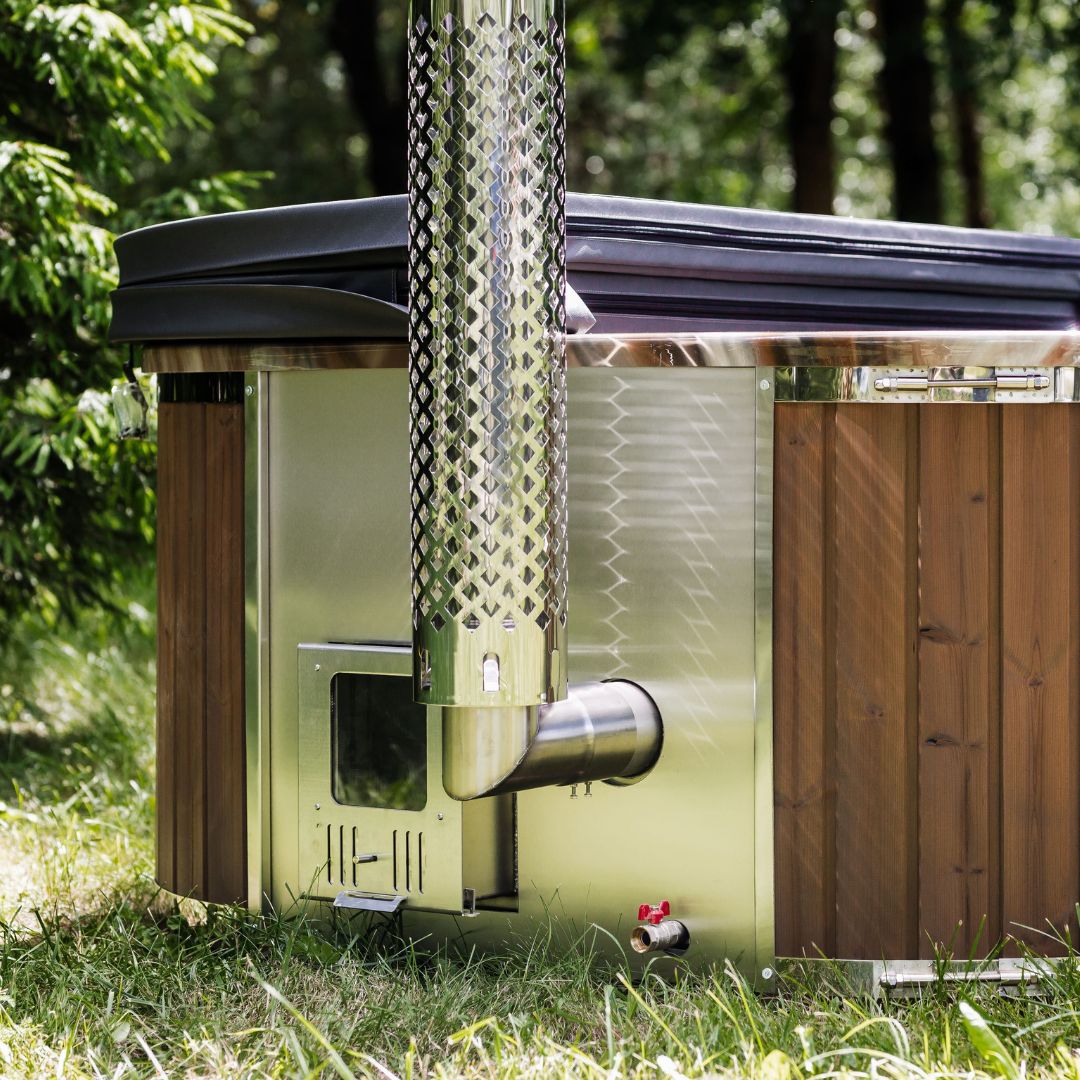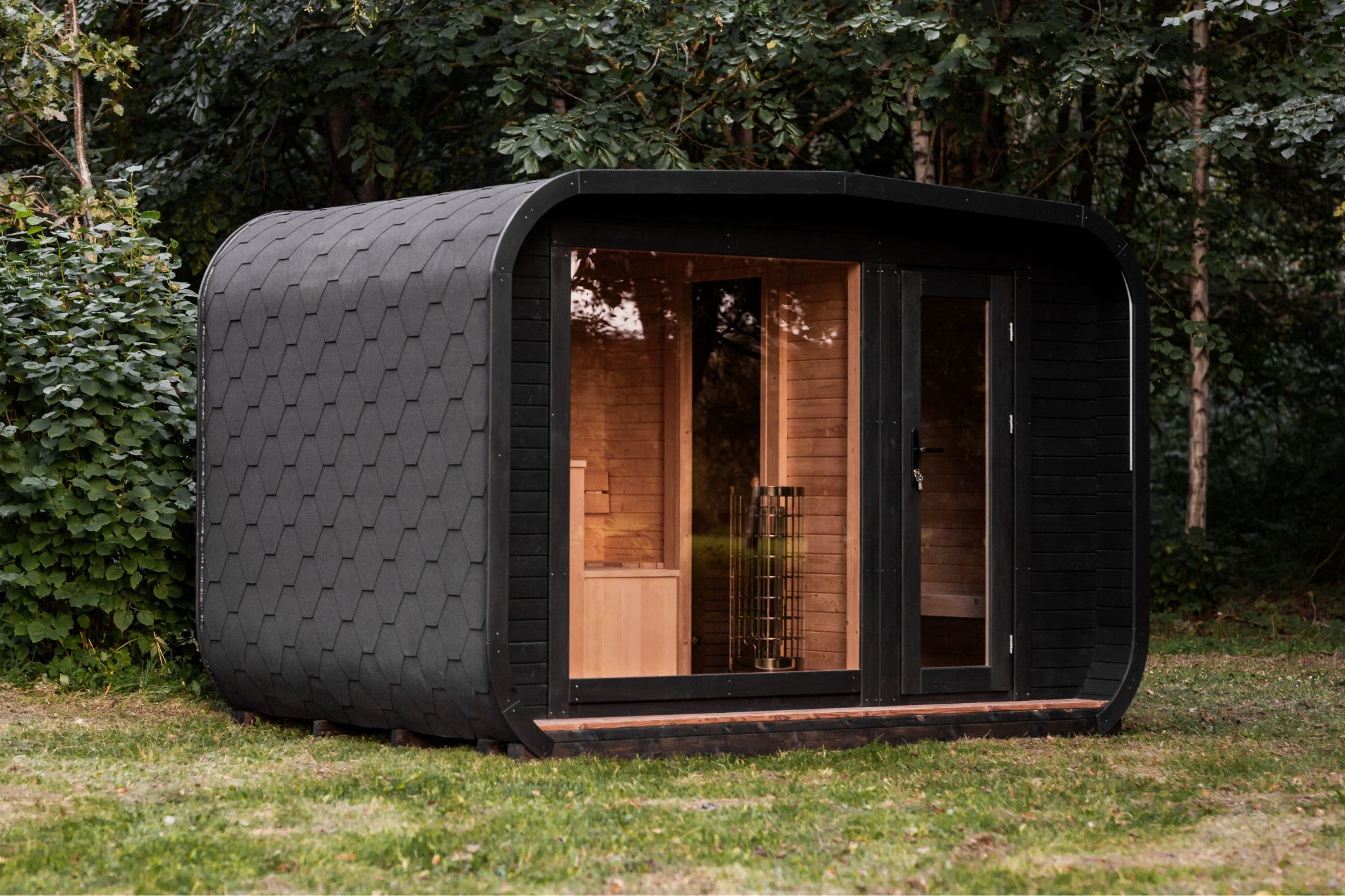HOW TO CHOOSE A HOT TUB HEATER?
Which hot tub heater should I choose – an integrated or external heater? Both types of heaters offer their own set of benefits and are equally effective. Below, we outline the key advantages and disadvantages of each. Ultimately, the choice depends on your individual needs and preferences, allowing you to select the most suitable option for your hot tub setup.
Advantages of the integrated heater
The integrated heater is discreetly installed beneath the fiberglass insert, making it largely invisible. Only about one-sixth of the stove is visible outside the tub, where solid fuel is added.
Recommended fuels include dry firewood and briquettes. Carbon is not advised due to the potential release of solid particles into the air, which could be harmful to bathers, especially since the chimney is 2 meters high and exits through the tub's shell.
Water heats up more quickly compared to an external heater, as it requires less water volume to be warmed.
The integrated heater saves space in your yard, as the overall area occupied by the hot tub is limited to the outer diameter of the tub itself.
The stove is constructed from 2mm thick stainless steel, ensuring durability and resistance to wear.
This type of heater is ideal for families with children, as the stove is positioned under the seating area, reducing the risk of burns.
The chimney features an additional 1-meter protective section that helps prevent burns from hot surfaces.
The heating power of the integrated stove is adjustable, allowing you to tailor it to your needs.
For optimal performance and longevity, we recommend choosing an AISI 316 stainless steel stove, which offers enhanced resistance to chlorine and salt.
Disadvantages of the integrated heater
The tub's useful space is slightly reduced due to the convex fiberglass insert where the stove is positioned.
Over time, wear and tear may occur, and replacing the stove could be more complicated compared to external models.
Advantages of an external heater
Provides more usable space inside the tub, as the heater is placed separately and does not occupy any of the tub’s internal area.
Offers greater flexibility when installing the hot tub on a terrace, as the stove can be positioned away from the tub. However, it is important to ensure that the stove is placed at the same height as the tub, and that space near the terrace is available for installation.
Recommended fuels include dry firewood and briquettes, while coal is not advised.
Constructed from 2mm thick stainless steel for durability and strength.
Ideal for owners of private homes, rural tourism establishments, or those planning a larger hot tub setup with more space.
The external heater is the most optimal choice for assembling a mobile hot tub.
The power of the external heater can be adjusted to meet specific needs.
For enhanced performance and longevity, we recommend selecting a stove made of AISI 316 stainless steel, known for its superior resistance to chlorine and salt.
Disadvantages of an external heater
Requires additional space for the stove, which may need to be factored into your yard layout.
A hot tub with an external heater will occupy more space in your outdoor area.
The stove is more vulnerable to theft, as it is located away from the tub.
When choosing between an integrated or external heater for your hot tub, each option has distinct advantages depending on your needs and available space.
An integrated heater offers a more compact solution, saving space in your yard and ensuring faster water heating due to the smaller water volume. It is ideal for families, particularly those with young children, as it reduces the risk of burns. Additionally, the stove’s discreet installation enhances the aesthetic of your hot tub area. However, it may reduce the available space inside the tub and can be more difficult to replace over time.
On the other hand, an external heater provides more flexibility and is better suited for larger or mobile setups. It allows for more interior space in the tub and can be installed away from the tub itself, making it a good choice for terraces or larger yards. It is also easier to adjust the stove’s power output and can be more durable when made from high-quality stainless steel. The main drawbacks are the need for additional space and the increased risk of theft, as the stove is separate from the tub.
Ultimately, the choice between an integrated or external stove will depend on your space requirements, aesthetic preferences, and how you intend to use your hot tub.




